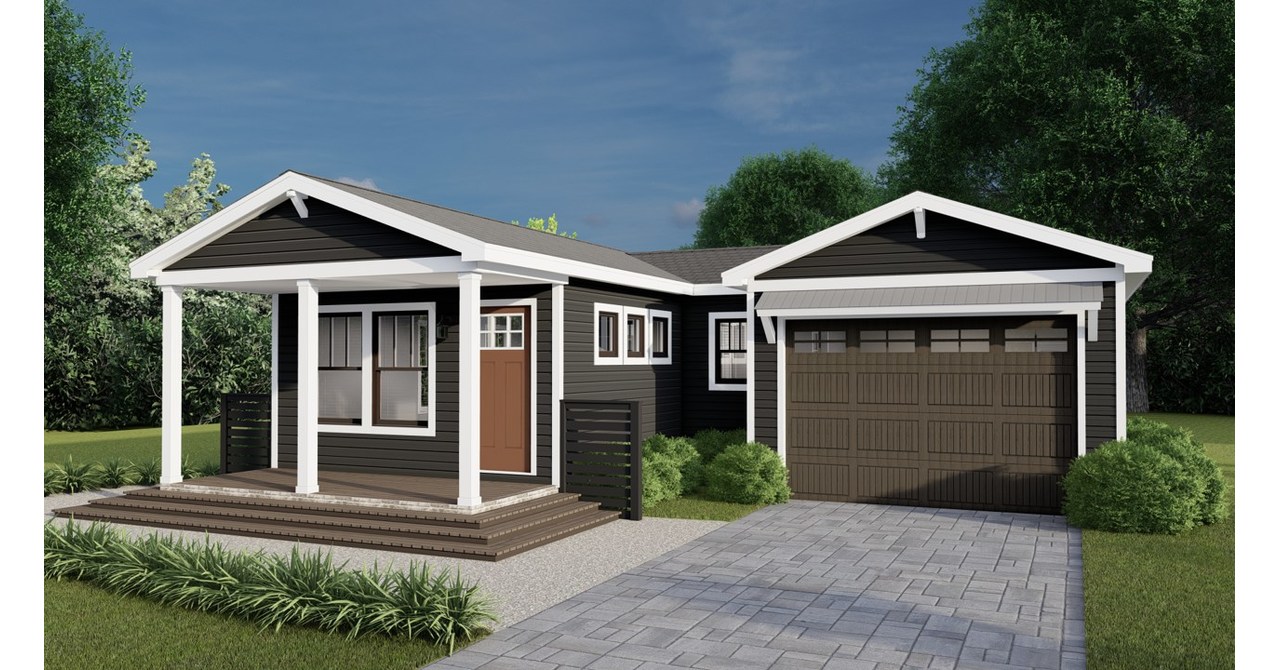Housing is constantly evolving, shaped by factors such as location, economic circumstances, and individual preferences. For Generation Z (Gen Z), those born roughly between the mid-1990s and early 2010s, the type of housing they will inhabit is a topic of considerable interest and concern.
As the cost of living continues to rise in many parts of the world, including the United States, Gen Z faces a variety of housing options and challenges. Having followed the offsite construction industry for decades, I’m actually seeing a broader range of housing, especially for Gen Zs who are beginning to shake up what is “acceptable” housing.
Here are some of what I see as opportunities for our industry to begin adapting to this new generation of home dwellers.
Rental Apartments: The Flexibility of Urban Living

One of the most common housing choices for Gen Z, particularly in urban areas, is rental apartments. This option provides flexibility and lower upfront costs compared to homeownership, making it an attractive choice for young adults just starting their careers. High demand for rental units in cities may lead to the development of smaller, more affordable apartments in multifamily buildings. These apartments are often designed to maximize space and efficiency, catering to the needs of a generation that values urban living and convenience.
Shared Housing: A Strategy for Cost Reduction
As housing costs continue to soar, some Gen Z individuals may turn to shared housing arrangements as a means to reduce expenses. Sharing a living space with roommates or opting for co-living spaces can significantly lower the monthly financial burden. Co-living arrangements typically involve renting a room within a shared apartment or house, allowing for cost-sharing while maintaining some level of independence. This trend reflects Gen Z’s willingness to embrace communal living and adapt to economic challenges.
Micro-Apartments: Maximizing Efficiency in Urban Centers

In densely populated urban areas with high housing costs, micro-apartments or tiny homes may become increasingly common. These compact living spaces are designed to maximize functionality within a smaller footprint. They offer a more affordable alternative to traditional apartments while allowing Gen Z residents to enjoy the benefits of city life. The appeal of micro-apartments lies in their efficient use of space and proximity to urban amenities, which align with the preferences of many in this generation.
Suburban Housing: Seeking Space and Affordability
:strip_icc()/Townhouses-50c8fced75f94e50ab11163369717484.jpg)
As some Gen Z individuals transition into adulthood, start families, or simply seek more living space, suburban housing may become an attractive option. Suburban areas often offer larger homes at more affordable prices than their urban counterparts. However, choosing suburban living may come with trade-offs, such as longer commutes and increased transportation costs. Gen Z’s housing choices will reflect their priorities, balancing space, affordability, and convenience.
Accessory Dwelling Units (ADUs): Encouraging Affordable Housing Options

In response to the housing affordability crisis, some areas are promoting the construction of Accessory Dwelling Units (ADUs), also known as granny flats or in-law suites. ADUs are secondary units on residential properties that can be used for renting out or housing family members. These smaller, more affordable units are seen as a way to increase housing supply and provide housing options that align with the needs of Gen Z and other generations.
Manufactured Homes: An Affordable Alternative

Manufactured or mobile homes are another housing option that may appeal to Gen Z, particularly in rural or suburban areas. These homes offer a lower upfront cost compared to traditional site-built houses. While they may lack some of the amenities of more expensive homes, manufactured homes provide an affordable path to homeownership or stable housing for those with budget constraints.
Housing Cooperatives: Community-Oriented Living

In the pursuit of more affordable housing, some Gen Z individuals may explore housing cooperatives. In these arrangements, residents collectively own and manage a housing complex, potentially reducing costs and fostering a sense of community. Housing cooperatives align with the values of collaboration and shared responsibility that many in Gen Z embrace.
Alternative Housing Models: Innovation in Affordable Housing

Innovation in housing construction is on the rise, and Gen Z may benefit from cost-effective alternatives to traditional housing.

This includes 3D-printed homes, modular construction, and other innovative approaches that aim to reduce construction costs and increase affordability.

These alternative models may become more prevalent as the housing affordability crisis continues to grow.
The Role of Individual Circumstances and Government Policies
It’s crucial to recognize that the housing choices of Gen Z will be heavily influenced by their individual circumstances, geographic location, and economic conditions. While many will face challenges due to high housing costs in certain areas, others may have more options available to them based on their financial resources and preferences.
Additionally, housing markets are dynamic and can change over time. Government policies and initiatives aimed at addressing housing affordability and accessibility may also play a significant role in shaping the housing landscape for Gen Z in the years to come.
The housing options for Generation Z are diverse and evolving. While the current housing situation poses challenges in terms of affordability and availability, Gen Z individuals have demonstrated resilience and adaptability in their housing choices. Whether it’s urban apartments, shared housing, innovative housing models, or more traditional suburban homes, Gen Z will continue to navigate the housing landscape in ways that reflect their unique needs and preferences.
The future of housing for this generation will be shaped not only by market forces but also by their collective determination to find suitable and affordable places to call home.
.



